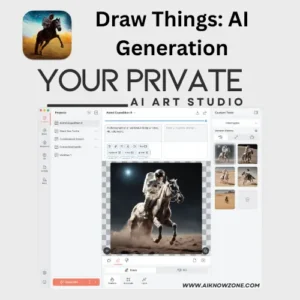
DataLang
Explore how DataLang empowers you to create custom chatbots from various data sources, enhancing user engagement and automation.
Description
DataLang Review: Your Data, Your Chatbot! 🤖
Alright, let’s dive into DataLang! This tool is all about making chatbots, but with a super cool twist: it lets you build them directly from your own data. Forget generic chatbots; DataLang empowers you to create custom conversational experiences tailored to your specific needs. Whether it’s pulling info from your website, databases, or even Google Sheets, DataLang puts the power of data-driven chatbots in your hands. It bridges the gap between your valuable information and interactive user engagement, offering a more personalized and effective communication channel. So, if you’re looking to automate customer support, provide instant answers, or simply offer a unique interactive experience, DataLang is definitely worth checking out. It’s designed to be accessible, meaning you don’t need to be a coding whiz to get started. Let’s see how this tool can transform your data into engaging conversations. 🤩
Key Features and Benefits of DataLang
DataLang boasts some impressive features that make it a compelling option for anyone looking to create custom chatbots. Here’s a breakdown of what makes it stand out:
- Multiple Data Source Connection: DataLang can connect to various data sources like websites, databases (PostgreSQL, MySQL), Google Sheets, Notion, and even files (text, HTML, markdown). This flexibility is key, allowing you to centralize your knowledge base and create a truly comprehensive chatbot.
- Customizable Chatbots: Tailor your chatbot to match your brand’s voice and style. DataLang provides customization options to ensure a seamless integration with your existing platforms.
- Flexible Deployment Options: Share your chatbot via a public URL, embed it on your website, or even publish it to the GPT Store. This gives you incredible control over where and how your chatbot interacts with your audience.
- API Access: For those who need more control, DataLang offers API access, allowing you to integrate your chatbot into existing workflows and applications.
How It Works (Simplified)
Okay, so how does DataLang actually work? It’s pretty straightforward. First, you connect your desired data sources, like your website or a database. DataLang then indexes and processes this data, essentially teaching itself the information. Next, you customize your chatbot’s appearance and behavior. Finally, you choose how you want to deploy it – maybe embed it on your website or share it via a link. The beauty of DataLang is that it handles the heavy lifting, so you can focus on creating a chatbot that provides real value to your users. Imagine setting it up to answer FAQs directly from your website content or providing personalized product recommendations based on customer data in your database. This is the power of DataLang in action! The intuitive interface makes it easier than you think. 😌
Real-World Use Cases for DataLang
Let’s get real – how can DataLang actually help you? Here are a few scenarios where I think it could be a game-changer:
- Customer Support Automation: Imagine you run an e-commerce store. Instead of manually answering repetitive questions about shipping, returns, or product information, you can use DataLang to create a chatbot that answers these queries instantly, 24/7. This would free up your support team to handle more complex issues and improve customer satisfaction.
- Internal Knowledge Base: If you work for a company with a ton of internal documentation, DataLang could be used to create an internal chatbot that helps employees quickly find answers to common questions about company policies, procedures, or resources. This would save time and improve employee productivity.
- Lead Generation: Integrate DataLang with your marketing website to engage visitors with interactive quizzes and personalized recommendations. Capture valuable lead information while providing tailored content based on user responses.
Pros of DataLang
- Connects to multiple data sources. 🔗
- Offers flexible deployment options. 🚀
- Allows for chatbot customization. 🎨
- Provides API access for advanced users. 🧑💻
Cons of using DataLang
- Pricing information can be hard to find. 💰
- Might require some technical knowledge to set up initially. ⚙️
DataLang Pricing
While specific pricing details weren’t readily available in the search results, it’s safe to assume DataLang offers various pricing tiers based on usage, features, and the number of chatbots you need. It’s best to visit their website (datalang.io) directly to get the most up-to-date and accurate pricing information. I recommend checking for free trial options or introductory offers to get a feel for the platform before committing to a paid plan.
Conclusion
In conclusion, DataLang is a powerful tool for anyone looking to create custom chatbots using their own data. Its ability to connect to various data sources, combined with its flexible deployment options, makes it a versatile solution for businesses of all sizes. While it might require a bit of technical know-how to get started, the potential benefits in terms of customer engagement, automation, and lead generation are significant. I recommend DataLang to anyone looking to leverage the power of AI-driven conversations to improve their business. Give it a try and see how it can transform your data into engaging interactions! 👍



Reviews
There are no reviews yet.